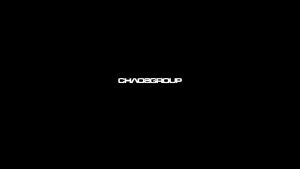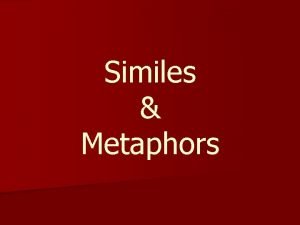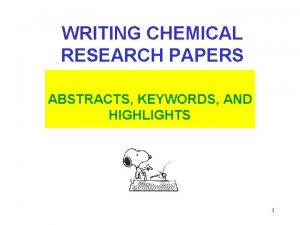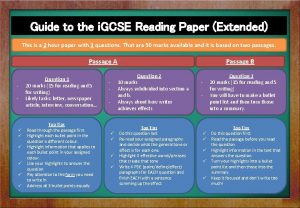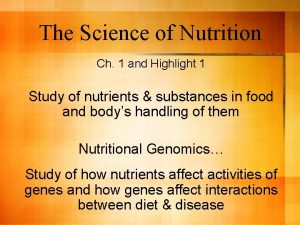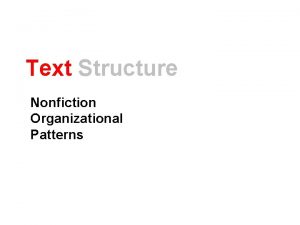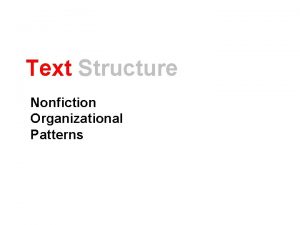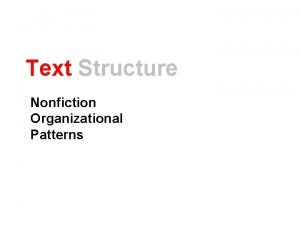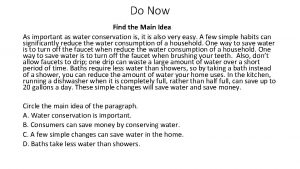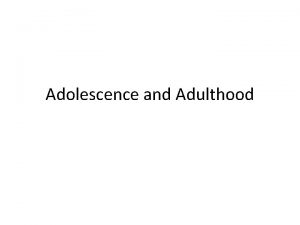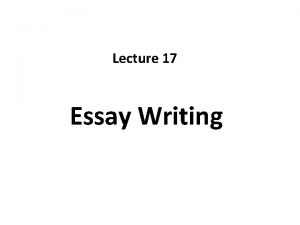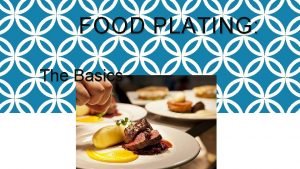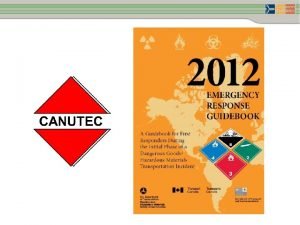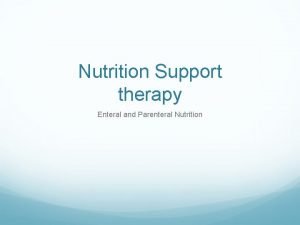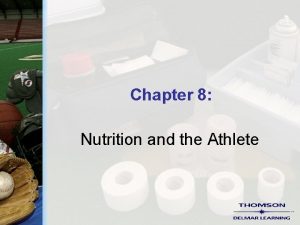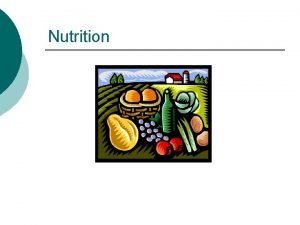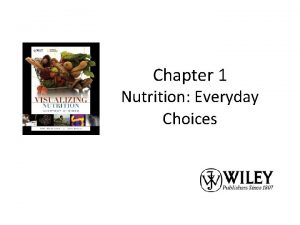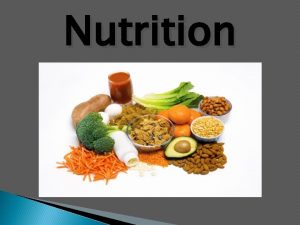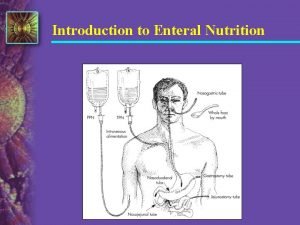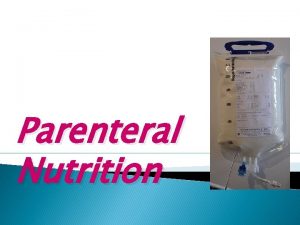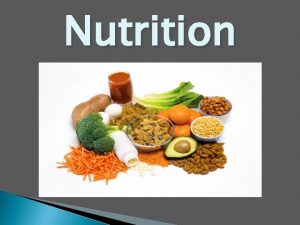The Science of Nutrition Ch 1 and Highlight
















- Slides: 16

The Science of Nutrition Ch. 1 and Highlight 1 Study of nutrients & substances in food and body’s handling of them Nutritional Genomics… Study of how nutrients affect activities of genes and how genes affect interactions between diet & disease

Conducting Research Consumers use personal experiences or reports from friends for nutritional info Called anecdotal information Not reliable scientific info Researchers use the Scientific Method

Scientific Method

Nutrition and the Scientific Method Ask a question. Identify your hypothesis - 1. 2. • Test your hypothesis via research - 3. • 4. 5. educated guess as to the answer to your question. data collection Interpret your data Generalize/Summarize findings

Research Terminology l Subjects: People/animals participating in research l Sample Size: The larger the amount of subjects tested the more valid (better) your results – Less is left to chance (chance variation is reduced)

Research Terms Continued. . l Replication: Before results of a study are considered acceptable, the experiment must be repeated by another researcher and similar results must be obtained l Peer Review: Before findings are published, other scientists evaluate the study to ensure the scientific method was correctly followed.

Primary Research l What is Primary Research? Detailed written account of the research findings. – Primary Research follows the Scientific Method for research. – l What is a Secondary Source of research? A brief, written account of someone else’s research. – Usually a short summary of research to help support their position on a topic. –

How do you know it’s Primary Research? l Written by the people who did the research. l Written description of study found in a Scholarly, Peer Reviewed Journal. A magazine published for those working in that type of field or industry. – Examples include: Journal of the American Medical Association, Journal of the Academy of Nutrition & Dietetics (formerly JADA) – l Contains Subheadings that follow the Scientific Method. Contains abstract (quick synopsis of research to allow for easy scanning of article) – Contains Subheadings: Introduction, Subjects, Methods, Data/Research Findings/Results, Discussion – l Lists references at end used by researchers to support their hypothesis and conclusions.

Table 1 -3 p 16

Finding Primary Research Students should find primary research at the Library!! You can access the Library Databases online or in person: – Library Periodicals http: //www. yvcc. edu Another online optionl Pub. Med via online search Pub. Med Home – Often does not have the full text article to read –

Criteria for Good, Scientific Nutrition Information - NOT Primary l Articles contain no paid advertising l Articles clearly list references and who is providing the information l Author/source is creditable Info comes from those working in the field of study or field closely associated with it (RDN) – Author’s credentials can be easily accessed –

Criteria for Good, Scientific Nutrition Information - NOT Primary l Author(s) may cite studies to support argument or topic l Best . edu websites come from. gov, . org, or

What is Questionable, Possibly Unreliable Secondary Info? Non-scientific sources l Sells – advertising or product(s) Is there a financial interest in you getting this info? l Source of information not provided or source is not reputable or scientific

What is Questionable, Possibly Unreliable Secondary Info? Non-scientific sources l Author is not credible or doesn’t have any specific specialty/education regarding topic l Uses anecdotal evidence (testimonies) vs. scientific research – Example: I lost weight, so can you….

Red Flags of Quackery

To Read: l Please read Highlight 1 in your book for more information l Pg 33 lists many websites that are credible sources of nutrition info – These will also be helpful for Project #2
 V ray materials
V ray materials Dream metaphors
Dream metaphors What's your favourite lesson?
What's your favourite lesson? Abstract and keywords example
Abstract and keywords example Highlight report template
Highlight report template Key highlight icon
Key highlight icon Highlight tips
Highlight tips Highlight ch 1
Highlight ch 1 The best pb and j ever text structure
The best pb and j ever text structure Devers experienced the highlight
Devers experienced the highlight More sports at ericson genre
More sports at ericson genre Highlight ch 1
Highlight ch 1 A herd of elephants flies past you at sixty miles per hour
A herd of elephants flies past you at sixty miles per hour During early teens, what is reasoning like?
During early teens, what is reasoning like? What is a essay
What is a essay Basics of plating
Basics of plating Erg 2012
Erg 2012
